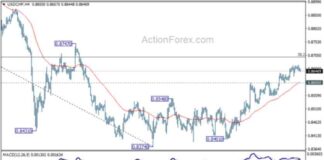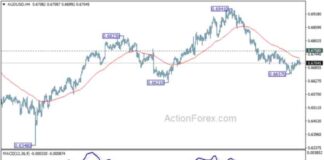Retail Sales Report: Key Expectations and Forecasts
Retail sales are a crucial indicator of economic health, reflecting consumer confidence and spending habits. As economists eagerly await the release of July’s retail sales data, expectations are high for another increase in sales. However, looming factors such as high debt levels, a weakening job market, and shifting consumer behaviors may signal a potential slowdown in spending in the months ahead.
Factors Influencing July’s Retail Sales
One key aspect of July’s retail sales report is the expected 0.3% increase compared to the previous month. This slight uptick is primarily attributed to a boost in auto sales, which have rebounded after disruptions caused by a cyberattack in the prior month. The resurgence in auto sales is a positive sign for the industry and could contribute significantly to overall retail sales figures for July.
On the other hand, gasoline sales are anticipated to have declined for the third consecutive month. This decline is largely due to subdued gas prices throughout the summer, resulting in lower consumer spending at the pump. The trend of declining gasoline sales reflects changing consumer behaviors and preferences, as more individuals may be opting for alternative modes of transportation or reducing their overall fuel consumption.
Impact of Amazon Prime Day on Retail Sales
Another significant factor influencing July’s retail sales is Amazon’s Prime Day, which took place in mid-July. This annual event has become a major shopping extravaganza, with consumers flocking to online retailers to take advantage of exclusive deals and discounts. According to Adobe Analytics, Americans spent over $14.2 billion during this year’s Prime Day, demonstrating the continued popularity and influence of the event on consumer spending patterns.
While Prime Day undoubtedly provides a boost to retail sales, economists are also considering the potential impact of competing sales events and seasonal factors on overall spending. Goldman Sachs analysts predict a sequential slowdown in credit card spending growth following Prime Day, coupled with potential headwinds from seasonality. These factors could temper the expected increase in retail sales for July, highlighting the complex interplay of various economic forces at play.
Concerns Over Weakening Job Market and Debt Levels
Despite the positive outlook for July’s retail sales, concerns linger regarding the weakening job market and high levels of consumer debt. Economists point to lackluster job growth in July and ongoing weaknesses in labor market indicators as potential obstacles to sustained consumer spending. The implications of slower income growth on consumer behavior are significant, as individuals may be less inclined to engage in discretionary spending in the face of economic uncertainty.
Wells Fargo economists Tim Quinlan, Shannon Seery Grein, and Jeremiah Kohl highlight the potential impact of these factors on consumer spending, noting that income growth plays a crucial role in driving overall economic activity. As job market conditions remain challenging and debt burdens persist, consumers may adopt a more cautious approach to spending, leading to a gradual slowdown in retail sales growth.
The Role of Retail Sales in Economic Recovery
Retail sales have played a pivotal role in driving the unexpected economic growth witnessed in recent months. Despite initial fears of a recession, robust consumer spending has buoyed the economy and fueled optimism about the prospects for recovery. The resilience of retail sales in 2024 has been a testament to consumer confidence and willingness to spend, even in the face of ongoing challenges.
However, economists warn that the post-pandemic spending spree may be nearing its end, as various factors converge to create a more challenging environment for retailers and consumers alike. The shifting dynamics of the job market, coupled with concerns over debt levels and changing consumer preferences, could signal a transition to a more subdued period of retail sales growth in the coming months.
Looking Ahead: Forecasts and Expectations
As economists await the release of July’s retail sales data, their forecasts and expectations offer valuable insights into the trajectory of consumer spending. While the consensus points to a modest increase in retail sales for July, the underlying factors driving this growth are complex and multifaceted. From the impact of Amazon Prime Day to the influence of auto and gasoline sales, a range of variables will shape the final retail sales figures for the month.
In conclusion, July’s retail sales report is likely to provide a nuanced picture of consumer behavior and economic trends. While the anticipated increase in retail sales is a positive sign for the economy, concerns over the sustainability of this growth persist. By examining the key factors influencing retail sales in July, economists can better understand the underlying dynamics shaping consumer spending patterns and prepare for potential shifts in the months ahead.
With retail sales serving as a critical barometer of economic health, the forthcoming data release will offer valuable insights into the state of the economy and the resilience of consumer spending. By analyzing the key expectations and forecasts surrounding July’s retail sales report, economists and policymakers can make informed decisions to support economic recovery and address challenges facing the retail sector.

















